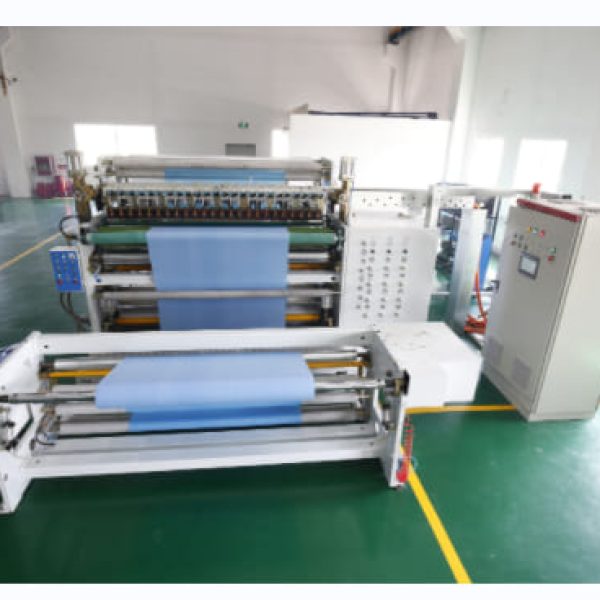Introduction
Polyethylene (PE) casting films have become a cornerstone in various industries due to their unique properties and versatile applications. This article aims to provide an in-depth exploration of the manufacturing process of PE casting films, shedding light on the steps, equipment, and quality control measures involved in their production.
Understanding PE Casting Films
Before delving into the manufacturing process, it’s crucial to understand what PE casting films are. These are thin layers of polyethylene, a type of plastic, produced through a process known as cast extrusion. PE casting films are known for their clarity, gloss, and tear resistance, making them ideal for packaging and protective applications.
The Science Behind PE Casting Films
PE casting films owe their unique properties to the science of polymers. Polyethylene, the primary component of these films, is a polymer made up of long chains of ethylene molecules. These chains can slide past each other, giving the material its flexibility. However, when stretched, the chains align and lock together, increasing the material’s strength and clarity.
The Manufacturing Process of PE Casting Films
The production of PE casting films involves a series of steps, each contributing to the final product’s quality and characteristics. Here’s a detailed look at the process:
Step 1: Raw Material Selection
The process begins with the selection of raw materials. Polyethylene pellets are the primary raw material used in the production of PE casting films. The quality of these pellets significantly impacts the film’s properties, making this step crucial in the manufacturing process.
Step 2: Melting and Extrusion
The polyethylene pellets are then fed into an extruder, where they are heated and melted to form a viscous liquid. This liquid is then pushed through a flat die to form a thin, flat film. This process is known as cast extrusion, and it gives PE casting films their name.
Step 3: Cooling and Solidification
The hot, extruded film is then cooled rapidly on a chill roll, causing it to solidify. The cooling process is carefully controlled to ensure the film’s clarity and gloss.
Step 4: Orientation and Heat Setting
In some cases, the film may undergo a process known as orientation. This involves stretching the film in one or two directions to improve its strength and clarity. The film is then heat-set to lock in these properties.
Step 5: Winding and Quality Control
Finally, the film is wound onto rolls and subjected to rigorous quality control checks. These checks ensure that the film meets the required standards in terms of thickness, clarity, and strength.
Equipment Used in PE Casting Film Production
The production of PE casting films requires specialized equipment. This includes extruders, flat dies, chill rolls, and winding machines. Each piece of equipment plays a crucial role in the manufacturing process, contributing to the film’s final properties.
Quality Control in PE Casting Film Manufacturing
Quality control is a vital aspect of PE casting film production. It involves checking the film’s properties, such as its thickness, clarity, and strength, to ensure they meet the required standards. Any deviations are corrected promptly to maintain the quality of the final product.
Advantages of PE Casting Films
PE casting films offer several advantages over other types of films. They have excellent clarity and gloss, making them ideal for packaging applications. They are also tear-resistant and can be tailored to meet specific requirements through the addition of additives during the manufacturing process.
Applications of PE Casting Films
PE casting films are used in a wide range of applications, from packaging to protective films. Their excellent properties make them a popular choice inindustries such as food and beverage, pharmaceuticals, and electronics, among others.
Innovations in PE Casting Film Production
The PE casting film industry is continuously evolving, with new innovations and technologies being introduced regularly. These innovations aim to improve the efficiency of the manufacturing process, enhance the properties of the films, and reduce the environmental impact of their production.
The Role of Additives in PE Casting Films
Additives play a crucial role in the properties and performance of PE casting films. These substances are added to the polyethylene during the manufacturing process to enhance certain properties. For example, plasticizers can be added to increase flexibility, while UV stabilizers can be used to improve resistance to sunlight.
The Environmental Impact of PE Casting Films
In today’s environmentally conscious world, it’s important to consider the environmental impact of PE casting films. These films are made from polyethylene, a type of plastic that is not biodegradable. However, advances in recycling technology have made it possible to recycle PE casting films, reducing their environmental impact.
The Future of PE Casting Films
The future of PE casting films looks promising, with ongoing research and development aimed at improving their properties and reducing their environmental impact. New technologies, such as nanotechnology and bioplastics, could revolutionize the PE casting film industry, offering improved performance and sustainability.
Conclusion
The manufacturing process of PE casting films is a complex yet fascinating one, involving a series of steps and specialized equipment. By understanding this process, we can appreciate the unique properties and versatile applications of these films. As the industry continues to innovate and evolve, we can expect to see even more improvements in the quality and performance of PE casting films.
Please visit our website for more product details https://medposnonwoven.com/product/pe-cast-extrusion-film/

